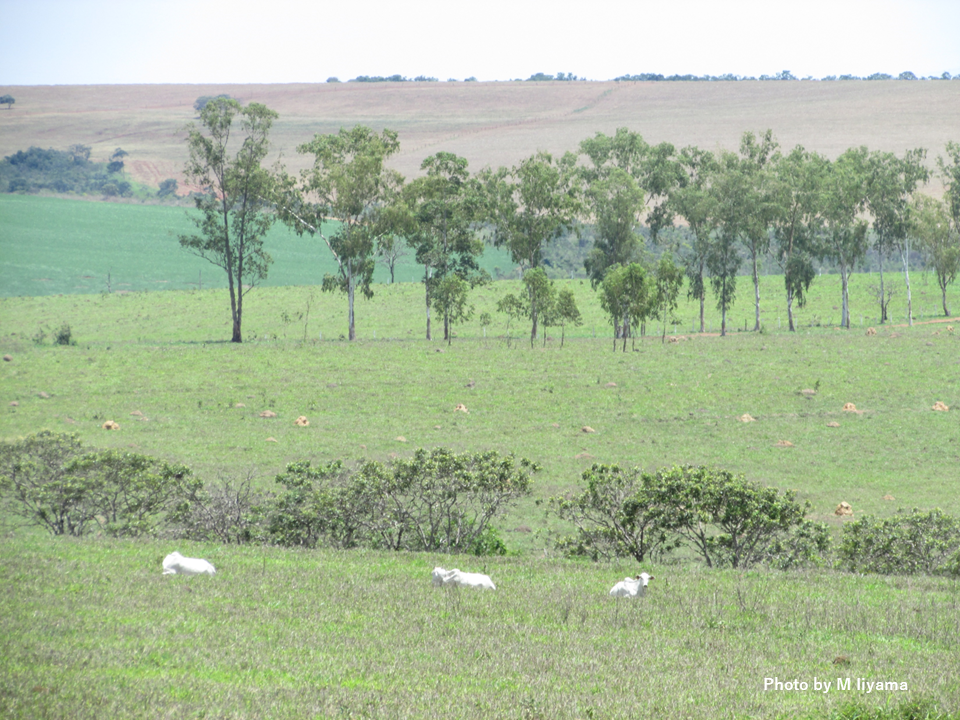Pick Up
727. FAO Report: Global Assessment of Soil Carbon in Grasslands

727. FAO Report: Global Assessment of Soil Carbon in Grasslands
The FAO report, "Global Assessment of Soil Carbon in Grasslands -From current stock estimates to sequestration potential" concludes that improved grassland management practices can increase the capacity of soils as carbon sinks and thereby increasing the carbon sequestration potential of grasslands in each country. Here is a summary.
Soil is the second largest carbon sink after the ocean, with grasslands containing about 20% of the world's stocks of Soil Organic Carbon (SOC) and playing an important role in global climate change. Globally, it is estimated that 63.5 megatons (Mt) of carbon was absorbed annually in grassland soils up to 30 cm deep in 2010. Unmanaged grassland (unimproved grassland) accumulated 33.8 Mt C, slightly more than the 29.8 Mt C of managed grassland (improved grassland), which accumulated 53 Mt C/ha and 50 Mt C/ha of SOC, respectively.
To maintain current carbon stocks, improved grasslands require 2.1 Mt C/ha per year, a higher carbon input than the 1.3 Mt C/ha of unimproved grasslands. This trend is seen globally, but due to the large spatial variability in the estimated values, soil conditions at the country level may differ significantly from global estimates. Many grasslands had positive carbon budgets, but looking at regions, the carbon budgets were negative in East Asia, Latin America, and Equatorial Africa due to agricultural activities and climate change.
Continued application of management practices that promote SOC sequestration for 20 years and a 0.3% increase in the SOC content of available grassland to a depth of 30 cm resulted in an annual sequestration of 0.3 tons C/ha. Sub-Saharan Africa and South Asia had the highest carbon storage potential per hectare at 0.41 and 0.33 tons C/ha/year, respectively, followed by Oceania, North America, and East Asia. Grasslands need to enhance SOC sequestration because low SOC levels in grasslands have the potential to cause serious soil degradation problems.
The 4/1000 Initiative, which aims to reduce the increase in atmospheric CO2 to zero by increasing the amount of carbon in the world's soils by 4/1000 each year, sets an ambitious goal of sequestering 3.5 petagrams (Pg) C per year to achieve substantial global mitigation (1Pg = 1000 Mt). Estimates suggest that 17% of this target can be achieved in the top 30 cm of grassland and should continue for at least 20 years after adopting SOC enhancing management practices such as livestock manure, agroforestry, and rotational grazing to increase SOC storage by 0.18-0.41 ton C/ha annually. Although this estimate does not take into account climatic differences and important soil process issues, especially nutrient and water limitations, biomass production and conversion rates, carbon storage through increased soil composition in grasslands is an achievable and effective way to increase that amount in a short period of time.
Future work should focus on spatial studies to explore the impact of livestock management practices at the national level and monitoring carbon sequestration through management in livestock-based ecosystems at the farm level.
Reference
Global assessment of soil carbon in grasslands -From current stock estimates to sequestration potential-
https://www.fao.org/documents/card/en/c/cc3981en
FAO publishes its first Global Assessment of Soil Carbon in Grasslands
https://www.fao.org/newsroom/detail/fao-publishes-its-first-global-asse…
The International “4 per 1000” Initiative
https://4p1000.org/
Contributor: KANAMORI Norihito (Information and Public Relations Office)
